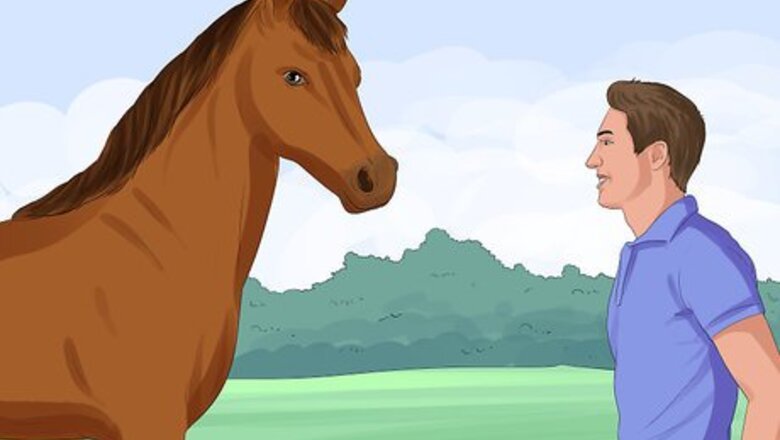
views
Attaching the Lead Rope to a Halter
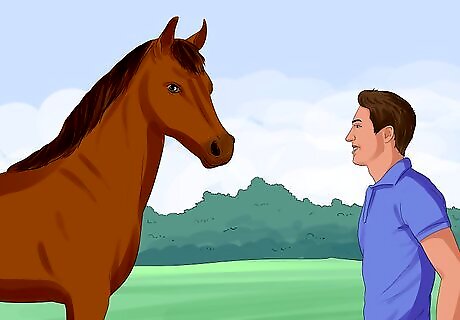
Approach the horse from the front. Always approach the horse from the front and slightly to one side, where the horse can see you coming. Stand next to the horse's head, facing the same direction as the animal. If the horse turns away, click your tongue until the horse faces you. You may convince it to turn around with a food reward instead, if the horse is trained and gentle. Certain horses are tied a certain way or not tied at all, so you want to go slowly and always use equipment that offers a quick release option. Various cross ties and snaps are helpful if something happens and the horse tries to pull back or from the pressure. We don't often pull them. We encourage them to come forward and follow us. Then move their bodies according to our body language or pressure. If the pressure makes them uncomfortable, they may try to get away.
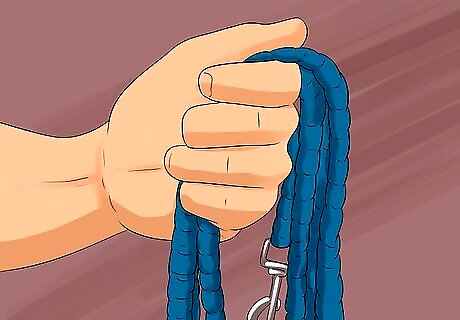
Loosely coil the lead rope in one hand. Whenever you're near a horse, always move in calm, easy motions. Move your hands up slowly to take the rope, then coil it loosely in one hand.
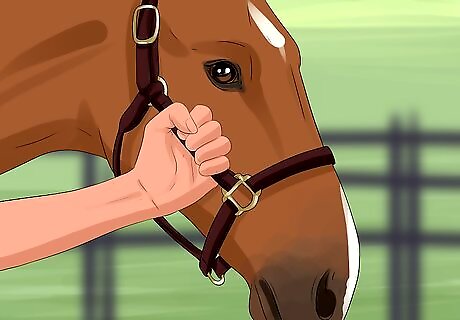
Grasp the halter. Reach up to the horse's face and hold the halter at the bottom of the noseband, near the middle ring. Confirm that the halter is securely fastened. Never hook your finger through the halter, or the rings. If the horse pulls away abruptly, you could injure your hand. If the horse is not wearing a halter, skip down to the section below.
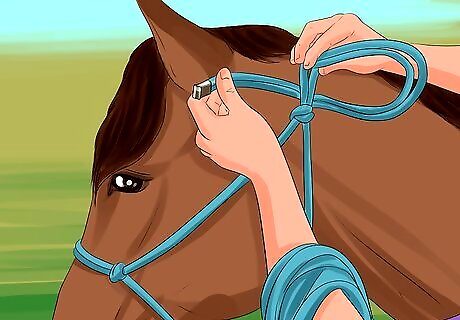
Gently take up the slack. Let go of the halter and take up most of the slack in the rope, so the horse knows you've attached it. Avoid pulling hard or holding the rope too close to the horse, as this may cause an inexperienced horse to panic. A very skittish horse may even rear if you pull down or forward on the rope. A trained horse should yield to pressure on the lead rope, and move forward. A green horse may pull back. If the horse pulls back or backs up, follow it. Don’t get into a tug-of-war. The horse will win.
Putting on a Halter and Lead Rope
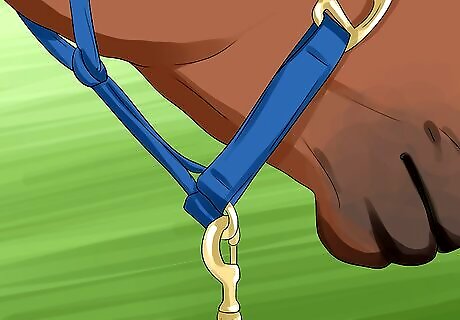
Clip the lead rope to the halter. Clip the end of the lead rope the middle bottom rung on the halter.
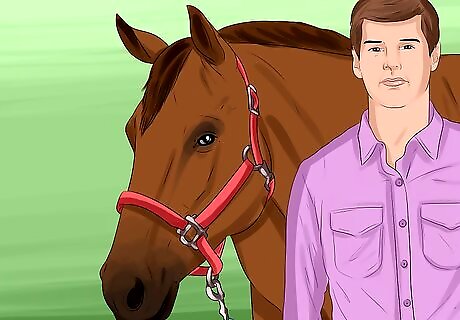
Stand on the left side of the horse's head. Approach the horse from the front, making sure it can see you. Stand on the left side of the head, since this is where the halter will buckle. Face the same direction as the horse.
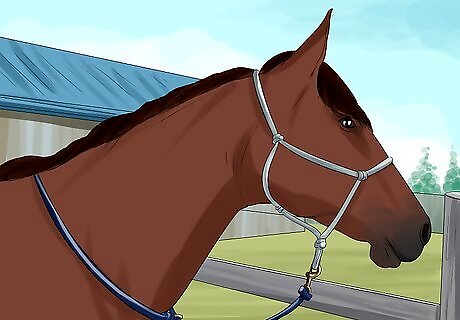
Loop the lead rope around the horse's neck. Place the loose lead rope high up on the horse's neck, just behind the draw. Pull the other end down under the neck so you can hold the loop closed in your right fist. This will keep the horse in place.
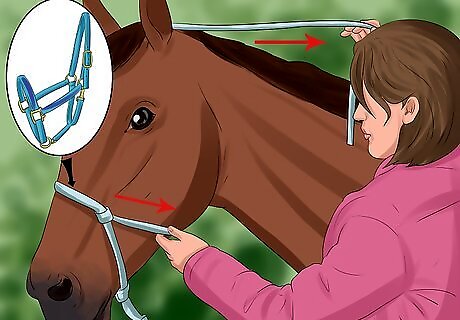
Open the halter. Hold the halter by the side ring on the noseband closer to you. Open the top halter buckle.
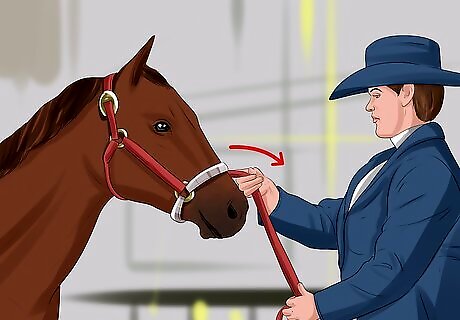
Slide the halter over the nose of the horse. Let go of the lead rope, and use that hand to reach under the jaw and put the back of the halter over the neck, behind the ears. Buckle the halter snug, but not tight. The end of the lead rope should still be over the horse’s neck. Reward the horse with a pat or a nice scratch, so it associates haltering with a reward. To keep the lead rope from falling down, you may place it over your arm. Never loop it around your neck, or around your arm, or the horse could injure you when it moves. If the horse is tall, you may need to flip the halter up above the neck.
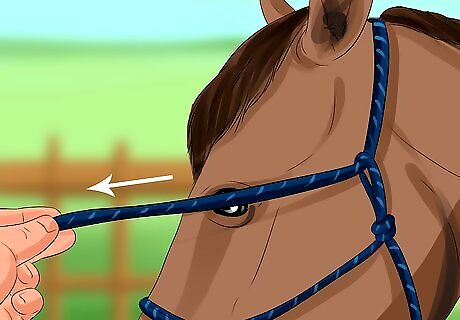
Adjust the halter. Check that the halter is secure and comfortable. There should be at least two fingers of space between the noseband and the horse.
Convincing a Head Shy Horse
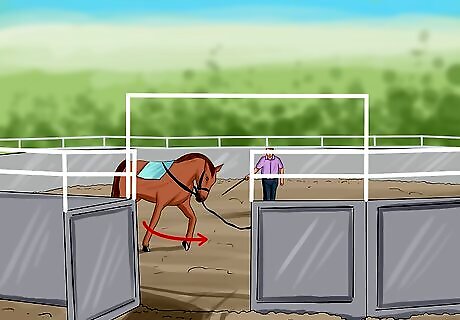
Bring the horse to a round corral. If the horse is inexperienced or untrained, it's best to attach the lead rope in a round corral. This is an easy space to handle the horse where it still has some room to walk away.
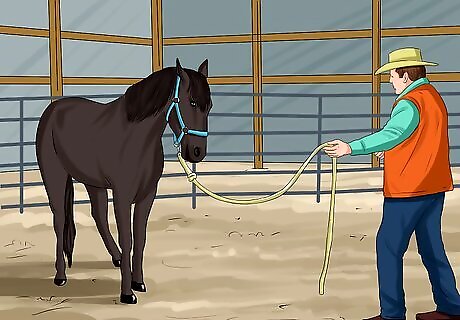
Let the horse investigate the rope. If the horse is not used to ropes, let the animal sniff and investigate it first. It may help to rub the rope against your body, demonstrating that it is not harmful. Let the horse chew on the rope, and rub it gently against its nose. Praise the horse when it relaxes. If the horse doesn't calm down, raise your arms and calmly shoo it away. Once the horse calms down and starts chewing or dips its head, turn your body and invite it to approach. Repeat the exercise with the rope until the horse calms down.
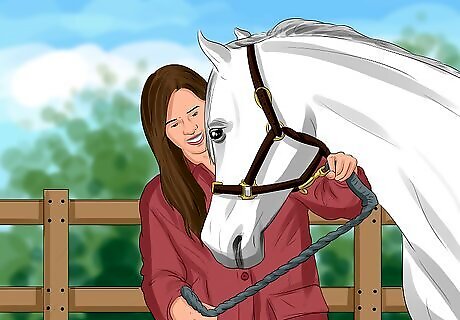
Soothe an agitated horse. If the horse presses its ears back or tries to back away, calmly stroke the horse and speak in gentle tones. Be gentle and patient until the horse relaxes and lets you put on the halter or clip on the rope. Always convince the horse to cooperate instead of forcing the halter on; you're never going to win a contest of strength with a horse.
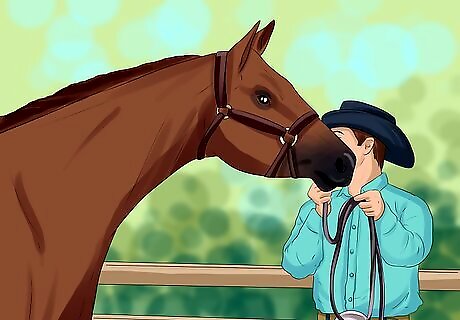
Repeat the attachment many times. If the horse is not fully relaxed after you've clipped on the rope, unhook it again and let the horse move away. Call it back to you, quickly snap the rope on again, and praise the horse if it stays calm. Repeat until the horse accepts the rope without pulling away. Do not chase after the horse in this situation. It's easier to develop trust if the horse comes to you.
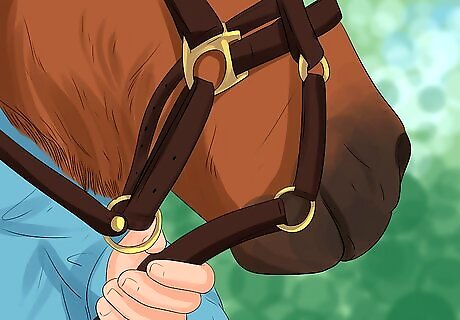
Try again with a short rope. If the horse will still not relax during this process, try attaching a very short rope instead, that the horse can't step on while grazing. Let the horse walk away with this short rope attached, then once they've calmed down, remove the rope and let the horse walk off. Repeat until the horse is no longer scared of ropes.

















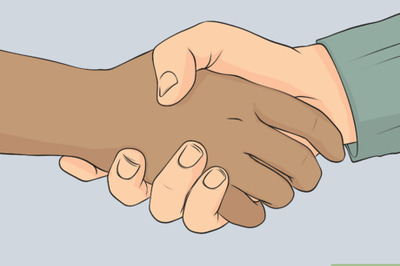
Comments
0 comment